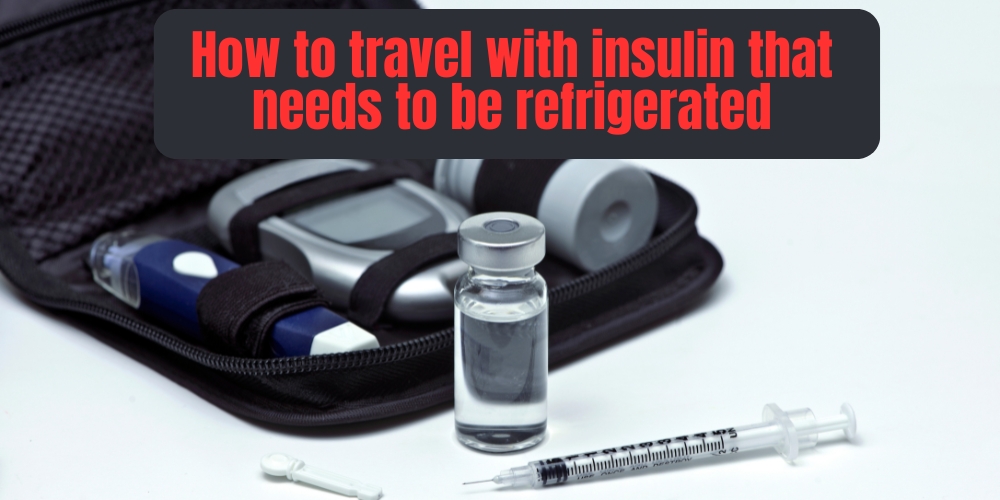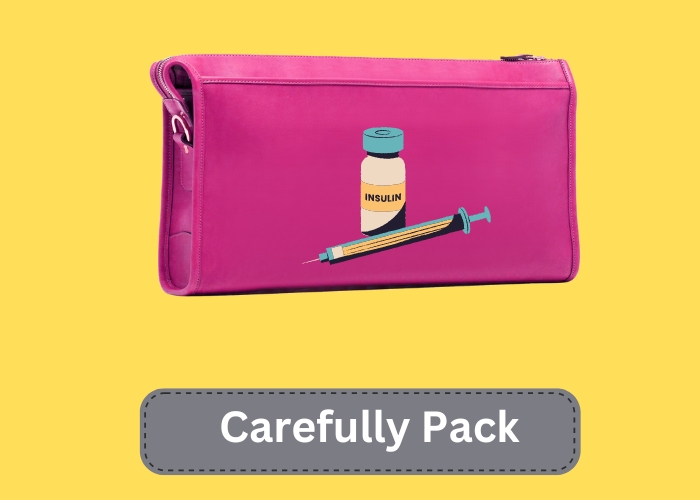For people who are managing their diabetes, traveling with insulin has extraordinary obstacles. It can be stressful to monitor your blood sugar levels, ensure your insulin is stored correctly in the face of temperature fluctuations, adjust to time zone shifts, and deal with disturbances in routine.
Whether you’re taking a quick or more extended trip, knowing how to keep your insulin cold when traveling correctly will help. Insulin must be kept cold before use and out of direct sunlight after opening due to its extreme sensitivity to temperature fluctuations. Insulin delivery at the incorrect temperature can negatively impact diabetes management and the efficacy of your treatment.
This post offers crucial advice and tips on How to travel with insulin that needs to be refrigerated while in transit!
The insulin you are taking.
You can store a fresh disposable pen or cartridge at room temperature after you start using it. Depending on the brand, you can store it at room temperature for a different time. Check with your physician, chemist, or diabetic nurse.It is advisable to allow insulin to come to room temperature before injecting it since using cold insulin right out of the refrigerator can cause discomfort.
Keep your insulin pen away from heaters and bright sunlight. It could become too heated for the insulin to function correctly. If you have kept long-acting insulin outside the refrigerator for longer than the maximum amount of time advised, it may function differently than intended. Therefore, you must return it to your pharmacy and discard it. To assist you in remembering, put the date on the package you took from the refrigerator.
When Should Insulin Be Stored Cold or Refrigerated?
To comprehend why and when insulin needs to be refrigerated, let’s first review the fundamentals of insulin storage. It’s not always necessary to keep your insulin chilled when traveling. Many insulin varieties don’t need to be refrigerated for up to a month, though this can vary based on the brand and formulation.
Temperatures for storing insulation
Insulin needs to be refrigerated before use. To preserve its efficacy, it should be kept in a refrigerator between 36°F and 46°F (2°C and eight °C).
However, your insulin pens, vials, or cartridges can be stored at room temperature, not to exceed 77°F (25°C), once they have been opened or taken out of the refrigerator. Insulin then needs to be used within a month or so. Depending on the kind and brand you’ve been prescribed, the precise shelf life of insulin at room temperature might range from 28 days (Humalog, Novolog, Lantus) to 42 days (Levemir, Novolin N, Toujeo) or even 56 days (Tresiba). As a result, always refer to the manufacturer’s storage recommendations for your particular insulin.
How to travel with insulin that needs to be refrigerated
This thorough advice will enable you to proceed confidently and quickly on the voyage.
Make a plan beforehand
- Speak with your physician:
Discuss your travel plans with your healthcare physician before your vacation. In addition to offering tailored guidance, they could recommend additional insulin or other prescriptions you might require for your holiday.
- Examine your destination:
Verify whether pharmacies and medical facilities are available where you’re going. You can feel more at ease knowing where to turn for assistance if you need it.
- Verify the rules for airlines:
Rules on bringing drugs vary throughout airlines. Find out your airline’s rules regarding carrying insulin and related supplies. Remember to let them know that you will be bringing medication that must be refrigerated.
Carefully Pack
- Make Use of Insulated Bags
Purchase a high-quality travel cooler or insulated bag made explicitly for storing pharmaceuticals. These bags can keep Your insulin at the proper temperature for a few hours. Brands such as Frio and MedAngel offer specialised products for this purpose.
- Cooling Packs:
Add gel or ice packs to your insulin container to keep it cool. Before you set out on your adventure, ensure they are frozen solid. Be aware that, to prevent freezing, ice packs should be positioned around your insulin rather than touching it directly.
- Monitoring of Temperature:
To make sure the temperature in your insulin bag stays within the safe range, which is usually between 36°F and 46°F or two °C and eight °C, think about utilising a thermometer or temperature monitor.
- Reservable Materials:
Store extra insulin in your bag in case of last-minute plans or emergencies. Add extra needles, syringes, alcohol wipes, and glucose metres.
While Travelling
- In the airport:
Screening for security:
Keep a prescription or doctor’s letter to present at security checkpoints. Tell the security personnel that you are bringing materials linked to insulin.
- Handbags:
Always keep your insulin in your carry-on bag to protect your insulin from the harsh cargo hold temperatures.
In-flight:
- During Flight Storage:
Request that your insulin be kept in the aircraft’s refrigerator by speaking with the flight attendants. If not, ensure your insulated bag stays closed and take regular temperature readings.
Avoid Direct Heat:
Keep your insulin bag away from heat sources and direct sunlight.
- Extended Distances:
It could be necessary to restock your ice packs if your trip is lengthy. Numerous medical services and facilities are available at airports and travel hubs where you can obtain fresh ice packs or temporarily store your insulin.
When You Get There
- Hotel Rooms:
Request for Refrigerator: Contact your hotel to request a refrigerator in your accommodation. For medical reasons, the majority of hotels will make accommodations.
Minibar Caution: Some minibars are not made for reliably excellent food, so if you use one, be sure it keeps a consistent and safe temperature.
- Local Transportation:
Continue to use your insulated bag with ice packs for local travel. When driving, store your insulin bag in the passenger section rather than the trunk, where the temperature is more controlled.
Readiness for Emergencies
- Locate nearby pharmacies:
Find out where the neighborhood pharmacies are so you can buy supplies if you need them. Having a list of them in an emergency can save a lot of time.
Warning: Medical
Put on a medical alert bracelet with your diabetes information on it. This is important if you require assistance and cannot express your medical needs.
Contacts for Emergencies:
Keep a list of emergency contacts, including your home contacts, doctor’s contact information, and local emergency numbers.
In summary
It takes a little more thought and preparation to travel with insulin that needs refrigeration, but it is doable. You can travel worry-free and make sure your insulin works throughout the trip by following these instructions.



